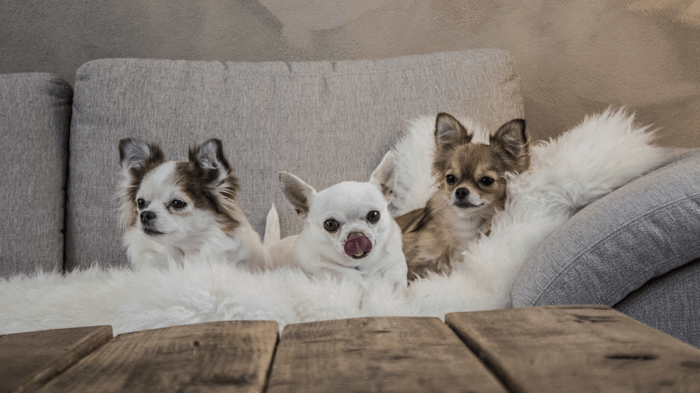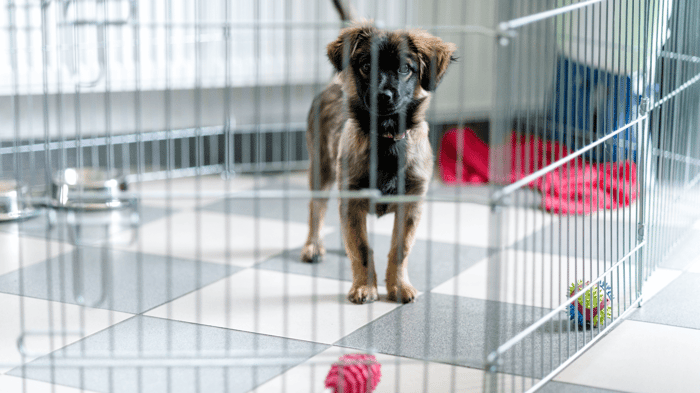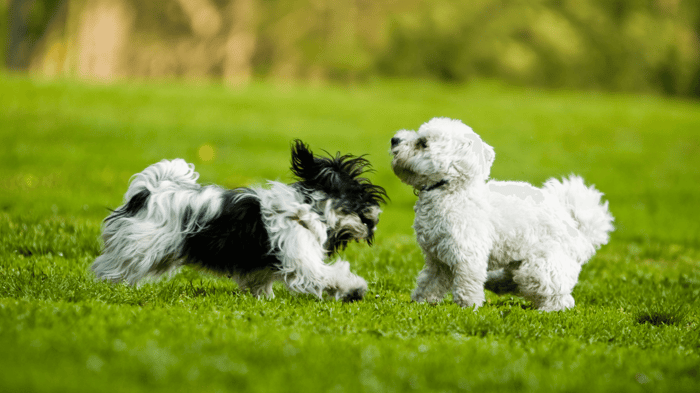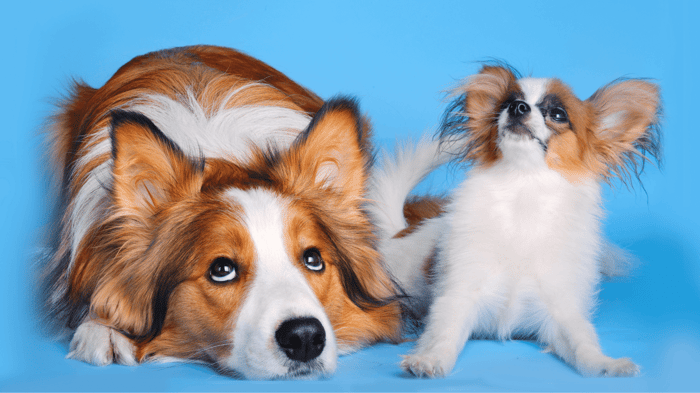Tiny dogs bring big love, but with their small size comes an extra level of care to keep them safe. Ever find yourself watching your little one dart across the room or yard, heart pounding at the thought of them getting hurt?
You're not alone. When it comes to toy breeds, even the simplest things—like jumping off the couch or playing outside—can feel like risky business.
These tiny pups may have mighty personalities, but their delicate bodies require a different level of attention.
It’s easy to overlook the everyday dangers they face. Maybe you've worried about larger dogs, or wondered if your home is truly safe for your furry friend. Perhaps you’ve caught yourself scanning the ground during walks, looking for anything they might swallow or trip over. These are all valid concerns, and it’s clear you’re doing your best to keep them protected.
But there are hidden risks that often slip under the radar.
Toy breeds need more than just love; they need a safety net tailored to their unique size and vulnerabilities. That’s where this guide comes in. Whether you're dealing with indoor hazards, socializing your pup with bigger dogs, or navigating outdoor adventures, you'll find expert tips that offer peace of mind.
Ready to give your tiny dog the care and protection they deserve? Let’s dive in.
The Fragile Nature of Toy Breeds: What You Need to Know
Toy breeds may be small, but they pack a lot of heart—and that makes their fragility all the more concerning. It’s not just about their size; it’s the way their tiny frames are built. If you've ever seen your little dog stumble or heard them yelp from what seems like nothing, you’ve probably felt a wave of panic. That’s because toy breeds are more vulnerable than most of us realize. Let’s break down why.

Anatomical Differences: Built Like Delicate Glass
Toy breeds have bones that are thinner and more delicate than their larger counterparts. Think of it like the difference between a glass ornament and a sturdy vase. Both are precious, but one requires a lot more care. A minor tumble off the couch or even jumping off your lap can lead to sprains, fractures, or joint issues in toy breeds. It’s easy to underestimate how something as simple as a jump from the bed could cause a serious injury.
Everyday Dangers in Their Environment
When you have a dog the size of a loaf of bread, the world is filled with hidden dangers. A room that seems harmless to you might be a minefield to your toy breed. Everyday situations can become risky for them in ways you might not expect:
- Falls: A small slip off a chair can feel like falling off a cliff for a toy breed. Consider using ramps or soft landings to minimize the risk.
- Tight spaces: Their tiny size means they can squeeze into places they shouldn’t, like between furniture, under beds, or even inside cabinets. You’d be surprised how often toy breeds get stuck or injured this way.
- Household items: Anything from a dropped pen to a fallen remote can be hazardous, especially if your pup decides it looks like a fun toy.
Emotional Sensitivity: Stress Isn’t Just a Human Thing
It’s easy to focus on physical dangers, but toy breeds are also emotionally sensitive. These little dogs often form strong bonds with their humans, and that attachment can make them prone to stress. Sudden changes in their environment, loud noises, or even being left alone for too long can send them into a spiral of anxiety. Stress can lead to issues like digestive problems, weakened immune systems, or destructive behavior.
By being mindful of their vulnerabilities, you can create an environment that keeps your little companion safe, both physically and emotionally. Understanding their fragility isn’t about living in constant fear—it’s about taking the right steps to protect them and help them thrive.
Creating a Safe Haven at Home
Your home is your tiny dog’s kingdom, but it can also be a maze of hidden dangers. While toy breeds may be small, their curiosity knows no bounds. They’ll leap, crawl, and squeeze into places you’d never expect, turning everyday objects into potential hazards. The good news? With a few simple tweaks, you can transform your home into a safe haven that keeps your pint-sized pup out of harm’s way.
Furniture: The High-Rise Danger Zone
When it comes to toy breeds, what seems like a small jump to you can feel like diving off a cliff to them. Whether it’s jumping off the couch or hopping down from your bed, these leaps can result in serious injuries like sprains, broken bones, or even head trauma. You may not be able to keep them from wanting to follow you everywhere, but you can minimize the risks.
Think of ramps and stairs as little elevators for your pup. These soft, cushioned steps are not only practical but also give your dog the freedom to climb up and down without the fear of injury. Plus, they’ll love the independence!
Blocking Off Small Spaces: Toy Breeds Are Mini Houdinis
Ever lost your dog for a few seconds, only to find them wedged behind the couch or under a cabinet? Toy breeds can squeeze into tight spaces that seem impossible, making it easy for them to get stuck or injured.
To prevent this:
- Seal Off Gaps: Use furniture blockers, baby gates, or even rolled-up towels to block off areas they shouldn’t be exploring.
- Check Under Furniture: Always check under sofas, beds, and cabinets for small gaps that might seem like an exciting tunnel for your curious pup. If they can fit their head in, the rest of them might follow.
- Crate Training: Consider crate training as a way to give your toy breed a safe, cozy space to retreat to when you’re not around. It gives them a sense of security and keeps them out of harm’s way.

Electrical Cords and Choking Hazards: Small Dog, Big Curiosity
Those dangling electrical cords and scattered small objects around the house? To your toy breed, they’re irresistible playthings. But what’s fun for them could spell disaster in seconds.
To keep things safe:
- Tidy Up Cords: Use cord covers or hide cables behind furniture. Never leave loose cords hanging where your dog can tug on them.
- Pick Up Small Objects: Pens, hair ties, and even small bits of food can become choking hazards. Make it a habit to sweep the floor regularly and ensure that anything within reach is safe to chew on—or better yet, out of reach entirely.
Securing Heavy Items: Because Gravity Always Wins
It’s easy to forget about the vases, books, or picture frames perched on shelves—until they come crashing down, right near your toy breed. Securing heavy items is a simple way to prevent an accident before it happens.
To protect your dog:
- Anchor Heavy Furniture: Secure bookshelves, large mirrors, and other furniture to the wall to prevent them from tipping over.
- Keep Breakables High: Fragile items should stay out of reach, either locked away or placed on high shelves where they can’t be knocked over.
By taking a few extra precautions, you’ll not only create a safer home but also give yourself peace of mind. It’s about creating a space where your dog can explore and play freely, without the constant worry of hidden dangers. And trust me, your little adventurer will thank you.
Navigating the Great Outdoors: Tips for Outside Play and Walks
The world outside is a playground for your tiny pup—but it’s also full of potential risks. From bustling streets to towering dogs at the park, outdoor time can feel a little intimidating when you’ve got a small, fragile companion by your side. But with the right precautions, you can keep your toy breed safe while still enjoying the great outdoors together. Let’s walk through how.
The Right Gear: Leashes, Harnesses, and Control
When it comes to outdoor adventures, your toy breed needs more than just a collar and leash. Their small necks are vulnerable, and a tug on the leash could lead to injury. That’s why a secure, well-fitted harness is essential for your dog’s safety.
- Opt for a harness and a collar: This distributes pressure across your dog’s body, avoiding strain on their delicate neck.
- Use a retractable leash with caution: These give your pup room to roam, but in busy or unpredictable environments, a short, sturdy leash is the safer bet.
Watch Out for Terrain and Weather Hazards
Toy breeds aren’t built for rough terrain or harsh weather. What might seem like a gentle hike for you could be a major obstacle course for your small dog.
- Rough terrain: Rocks, holes, or even tall grass can pose tripping hazards. Stick to flat, well-maintained paths when you can.
- Weather conditions: Small dogs are more vulnerable to extreme temperatures. In hot weather, limit outdoor play to early morning or late evening, and always have water on hand. Cold weather? Consider a dog sweater or coat to keep your pup warm. Their little bodies lose heat fast!
Urban Hazards: Cars, Bikes, and People
Navigating city streets can be tricky. Cars, bicycles, and even crowds can create a chaotic environment for a toy breed. Keep your dog close and stay alert to avoid sudden dangers.
With these tips, outdoor time becomes less of a worry and more of a joy. Now you and your tiny adventurer can take on the world together—one safe step at a time.
Keeping Your Toy Breed Safe Around Larger Dogs and Other Animals
It’s natural to want your toy breed to enjoy socializing with other dogs, but when larger, more energetic animals are in the mix, things can get complicated fast. A playful bump from a bigger dog might seem like no big deal, but for your tiny pup, it can feel like a linebacker crashing into them. The key to safety is caution, control, and knowing when to step in.
Safe Introductions: Start Small

Introducing your toy breed to larger dogs requires patience and preparation. You want to create an environment that feels safe for both dogs, but especially for your little one.
- Choose neutral ground: Meet in an open, neutral space like a park rather than at home, where territorial instincts might kick in.
- Keep it calm: Before allowing the dogs to interact, make sure the larger dog is calm and well-behaved. Avoid dogs that are overly energetic or rough.
- Stay close: Be ready to step in. If your toy breed shows signs of discomfort, like cowering, tail tucking, or excessive licking, it’s time to intervene.
Recognizing Fear and Discomfort
Even if your toy breed looks brave, they might be hiding their stress. Watch their body language closely. Signs like trembling, raised fur, or avoiding eye contact mean your dog is overwhelmed and needs space.
- Pause the interaction: If your dog shows signs of fear, calmly remove them from the situation to give them a break.
- Reinforce with positive association: Use treats and soothing words to make sure your pup feels safe after the interaction.
Training for Social Situations
Socializing with larger dogs doesn’t have to be scary. With a little training, your toy breed can learn how to navigate these encounters with confidence.
- Teach recall commands: Training your dog to come when called helps you quickly remove them from unsafe situations.
- Desensitization: Gradually introduce them to larger dogs in controlled, positive environments so they can build up confidence.
With these steps, your tiny dog can enjoy playtime with bigger friends, and you can breathe easy knowing they're protected.
Final Thoughts
Your toy breed may be small, but the love and care you pour into their safety are anything but.
Taking these extra precautions—whether it’s securing your home, picking up the right harness, or keeping a close eye during playtime with bigger dogs—is all part of the dedication you’ve shown to protect your tiny companion. And that dedication matters. Every little step you take makes a big difference in your dog’s health and happiness.
It’s not always easy to think of every potential hazard, but you’ve already proven how much you care by diving into this guide.
The time, effort, and thought you put into keeping your dog safe aren’t just about avoiding accidents—they’re about creating a life where your pup can thrive, play, and explore with confidence, knowing you’re always there looking out for them.
Now that you’ve got these expert tips in hand, you can take action today. Start small: maybe it’s adding a ramp to the bed or updating their feeding routine. Whatever it is, each adjustment brings you one step closer to providing the safest environment possible for your little one.
Here’s a quick checklist to get started:
- Secure your home: Block small spaces, use ramps, and tidy up cords and small objects.
- Choose the right gear: Opt for a training collar specifically designed for small dogs.
- Watch for health signs: Be aware of symptoms like lethargy, trouble breathing, or vomiting.
- Create an emergency plan: Save your vet’s number, and keep a first-aid kit handy.
By implementing these tips, you’re giving your toy breed the best chance at a happy, healthy life. And isn’t that what being a great pet parent is all about? You've got this—your pup is lucky to have you!

